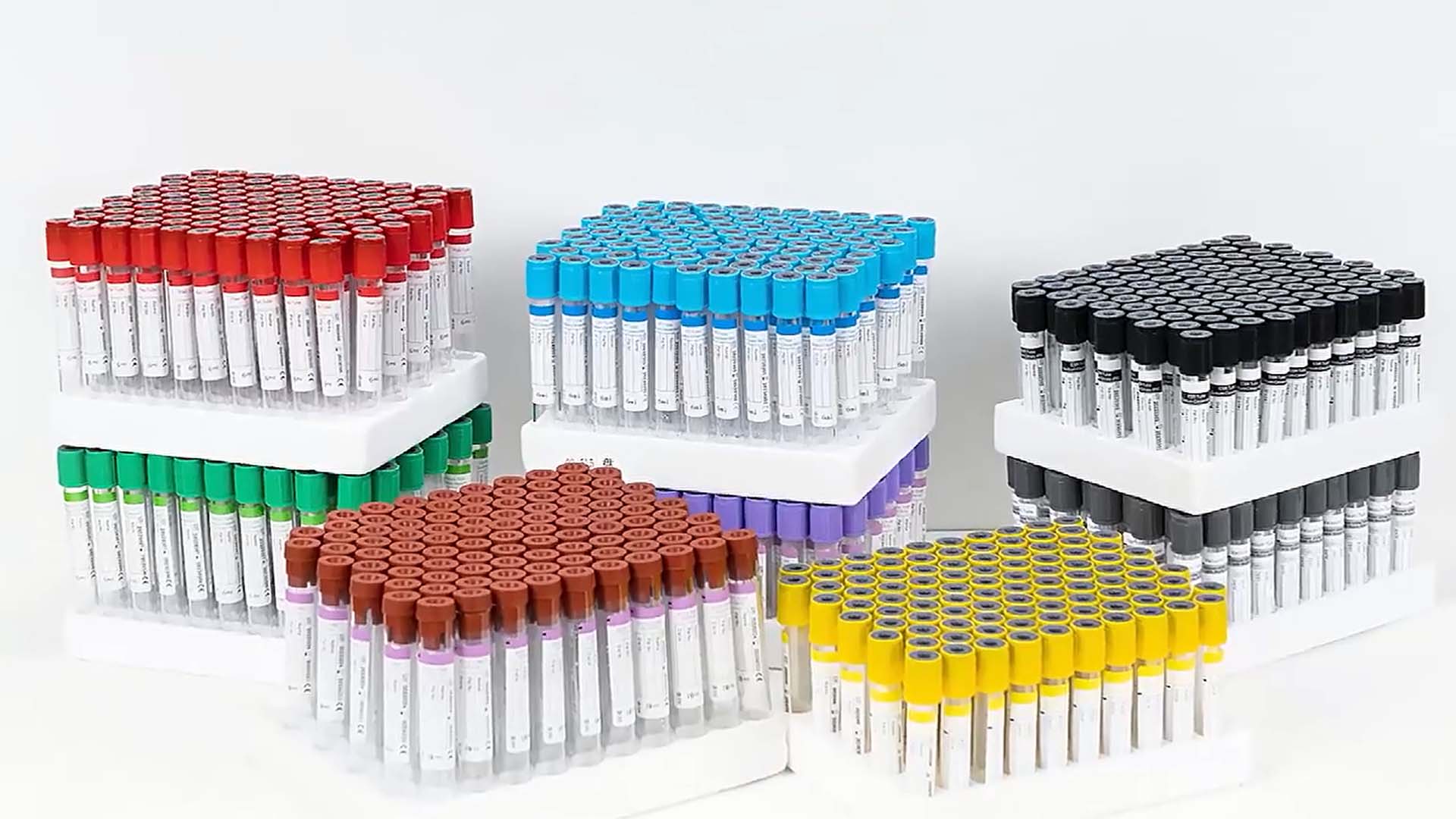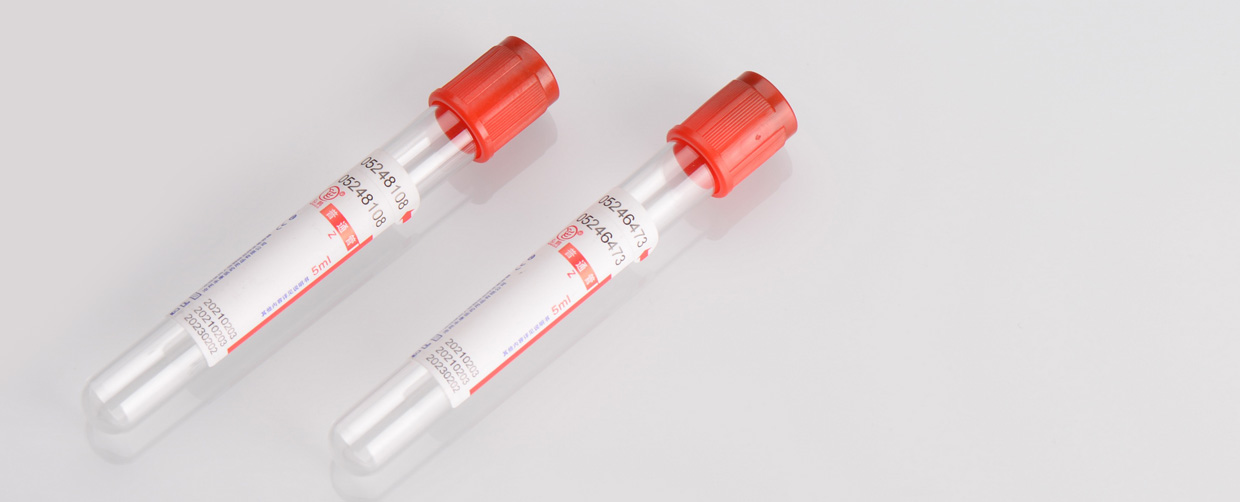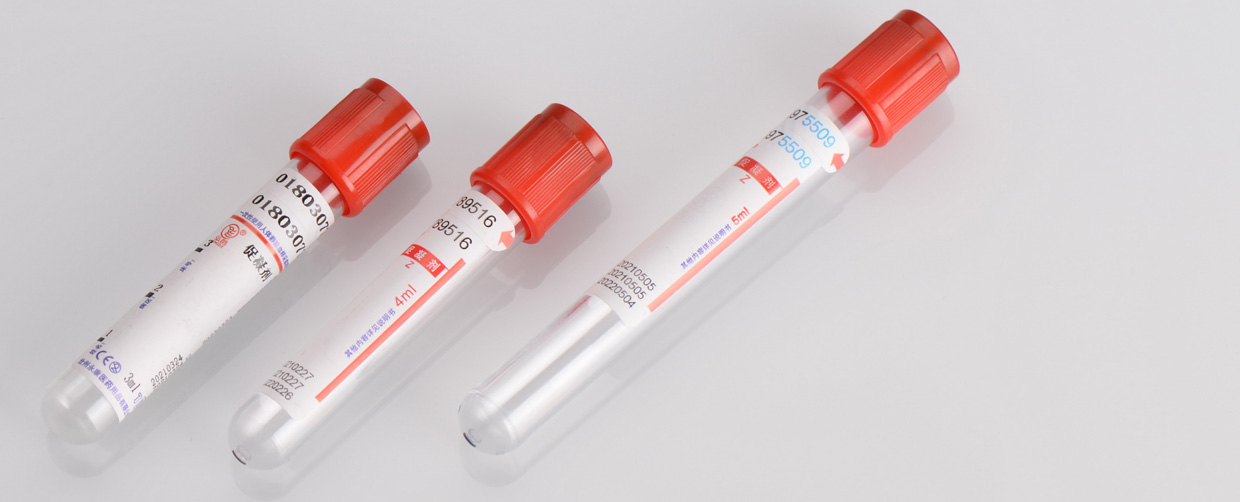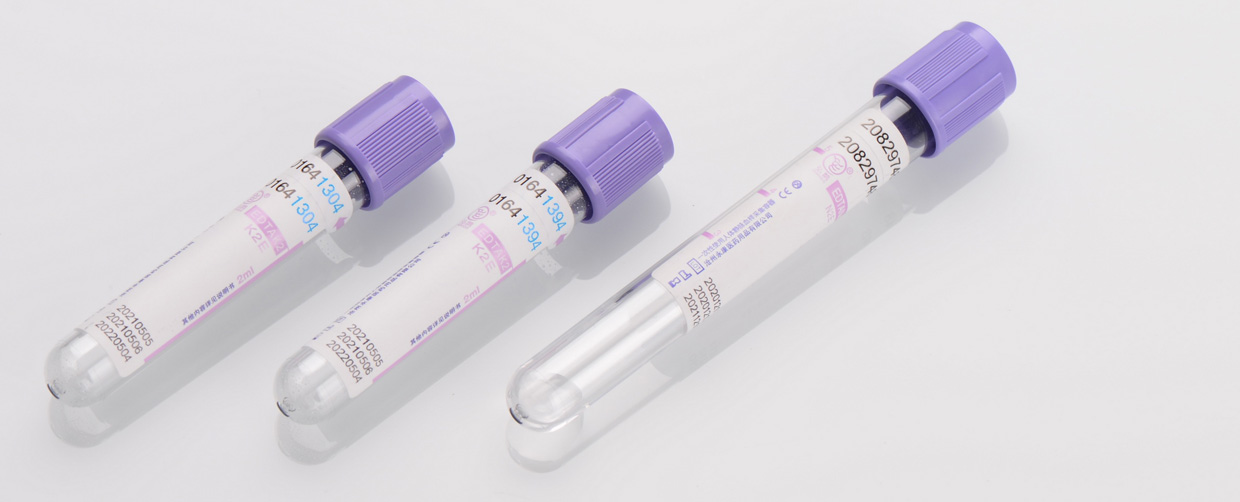
The vacuum blood collection tube device consists of three parts:
- Vacuum blood collection tube
- Blood collection needle (including straight needle and scalp blood collection needle)
- Needle holder
A vacuum blood collection tube is its main component, mainly used for blood collection and preservation.
In the production process, pre-set a certain amount of negative pressure when the blood collection needle punctures the blood vessels.
Due to the negative pressure within the blood collection tube, blood automatically flows into the vacuum blood tube; at the same time, the vacuum blood tube is pre-set with a variety of additives, fully able to meet several integrated clinical blood testing, safe, closed, convenient transfer.
Vacuum blood collection tubes are generally divided into the following types:
1. Dry empty tube without additives(Plain Tube):

The inner wall of the blood collection tube is evenly coated with agents (silicone oil) to prevent wall hanging.
It uses the natural coagulation of blood to make it gel, then centrifuged for use after the serum is naturally precipitated.
It is mainly used for serum biochemistry (liver function, kidney function, cardiac enzymes, amylase, etc.), electrolytes (serum potassium, sodium, chloride, calcium, phosphorus, etc.), thyroid function, drug testing, AIDS testing, tumor markers, and serum immunology.
2. Clot activator tube:

The inner wall of the blood collection tube is evenly coated with silicone oil to prevent wall hanging while a clot activator is added.
The clot activator fibrinase, turns soluble fibrin into insoluble fibrin aggregates, thus forming a stable fibrin clot.
You can use clot activator blood collection tubes to get fast results.
It is generally used for emergency biochemistry.
3. Containing the separation gel and procoagulant blood collection tube(SST):

Tube wall after silicification treatment and coated with procoagulant can accelerate blood coagulation and shorten the test time.
Tube with separation gel, separation gel, and PET tube has a good affinity, does play a role in isolation, generally even in the ordinary centrifuge, separation gel can be the liquid components of blood (serum) and solid components (blood cells) completely separate and accumulate in the test tube to form a barrier.
No oil droplets are produced in the serum after centrifugation, so it does not clog the machine.
It is mainly used for serum biochemistry (liver function, kidney function, cardiac enzymes, amylase, etc.), electrolytes (serum potassium, sodium, chloride, calcium, phosphorus, etc.), thyroid function, drug testing, AIDS testing, tumor markers, and serum immunology.
Learn about what is Serum Separation Tubes.
4. Blood collection tubes with anticoagulant in the tube:
4.1 Blood collection tubes containing sodium heparin or lithium heparin(Heparin Tube):

Heparin is a mucopolysaccharide containing sulfate groups with a strong negative charge, which enhances the inactivation of serine protease by antithrombin III, thus preventing thrombin formation, and has a variety of anticoagulant effects such as preventing platelet aggregation.
Heparin tubes are generally used for emergency biochemistry and blood rheology testing and are the best choice for electrolyte testing.
When testing sodium ions in blood specimens, sodium heparin cannot be used to avoid affecting the test results.
It also cannot be used for leukocyte counting and classification, as heparin can cause leukocyte aggregation.
4.2 Containing ethylenediaminetetraacetic acid and its salt (EDTA-) blood collection tube(EDTA Tube):

Ethylenediaminetetraacetic acid is a polycarboxylic amino acid that can effectively chelate the calcium ions in the blood; chelated calcium will remove calcium from the reaction point and prevent and terminate the endogenous or exogenous coagulation process, thereby preventing blood clotting.
Compared with other anticoagulants, it has less effect on the coagulation of blood cells and the morphology of blood cells, so EDTA salts (2K, 3K, 2Na) are usually used as anticoagulants.
It is used for general hematological examination and cannot be used for blood coagulation, trace elements, and PCR examination.
4.3 The blood collection tube containing sodium citrate anticoagulant:
Sodium citrate acts as an anticoagulant by working on the calcium ion chelation in the blood sample.
4.3.1 Sodium citrate 3.2% or 3.8%(Sodium Citrate Tube)

The ratio of anticoagulant to blood is 1:9, mainly for the fibrinolytic system (prothrombin time, prothrombin time, activated partial thromboplastin time, fibrinogen).
When collecting blood, should take enough blood to ensure the accuracy of the test results; blood should be immediately inverted and mixed 5-8 times after collection.
4.3.2 Sodium citrate 3.2% or 3.8% (ESR Tube)

The volume ratio of its anticoagulant to blood is 1:4, generally used for blood sedimentation tests; the anticoagulant ratio is too high when the blood is diluted, making the blood sedimentation faster.
4.4 Tube containing potassium oxalate/sodium fluoride (1 part sodium fluoride and three parts potassium oxalate)(Glucose Tubes):

Sodium fluoride is a weak anticoagulant, has good prevention of blood glucose degradation, and is an excellent preservative for blood glucose testing; the use of attention should be slowly reversed and mixed.
It is generally used for a blood glucose test and cannot be used for urea determination by the urease method nor for detecting alkaline phosphatase and amylase.
Yongkang has a full range of vacuum blood collection tubes.







